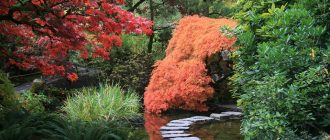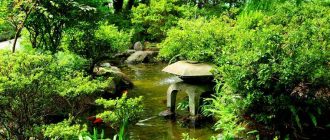Interested in the historical development of gardens in Japan? Take a trip back in time as we trace the history of Japanese gardens…
Tracing back the history of the development of Japanese gardens we find the roots of the concept took birth during the time known as the Asuka Period in Japanese history. The influence of the Buddhist dharma was in full swing during these years. Garden works attempted to imitate famous mountains and other natural elements.
Archaeologists have been able to dig out evidences of Japanese style gardens from the towns of Heijyo and Fujiwara. One of these towns even contains a water passage that was used for water poetry ceremonies during those times.
Kyoto is home to one of the oldest examples of Japanese pond gardens that actually belonged to the Emperor Saga. Known as the Osawa Pond this artificial pond was created specifically to aesthetically enhance the surrounding of the emperor’s palace. This work of art belongs to the Heian Period.
Shinden-Zukuri gardens
A unique style of Japanese gardening evolved during the Heian Period known as Shinden-zukuri. Such a garden was positioned in front of the palace with an artificial water passage leading water into a pond. The pond would have islands in it.
There is an ancient Japanese book belonging to the late Heian Period within which we find details regarding the elements and principles of Japanese gardening. The book makes mention of the different aspects involved in designing a Japanese garden from allotting the spaces to stone arrangements and the making of artificial waterfalls along with passages and planting.
The Buddhist concept of pure land style was at its zenith during this era. The idea behind creating gardens that depicted the harmony in creation using only natural materials was to create a paradise on earth type environment. There was a transition in the shinden style prevalent before this time towards the Amitabha style.
Archaeologists have been able to dig out remains of such gardens in different regions of Japan. The Mahayana Hall in Nara, the Jyoruri Temple, Byodoin in Kyoto and the Motsuji Temple in Hiraizumi are some of the classic examples of the Japanese gardens of that time.
The years between the Kamakura Period and the Muromachi Period were a time when Japanese garden designs were being explored to their maximum. The rise of the philosophy of Zen Buddhism and the Syoin-zukuri style were major influences during this time. Furthermore the Shoguns had a passion for Japanese gardens and would often patronize and encourage the development of Japanese gardens.
The unorthodox dry landscape style of Japanese garden evolved during this time period. This was a revolution in design as it sought to symbolically represent water with raked sand. This was something that had previously never been conceived of by anyone.
There seems to be some disagreement with regards to who is to be credited for the development of the Japanese garden. Whereas we find that the works of Soseki Muso clearly show the artistry and essence of Japanese gardening we also find the monk Doryu Raikei to be a major contributor to the art form.




